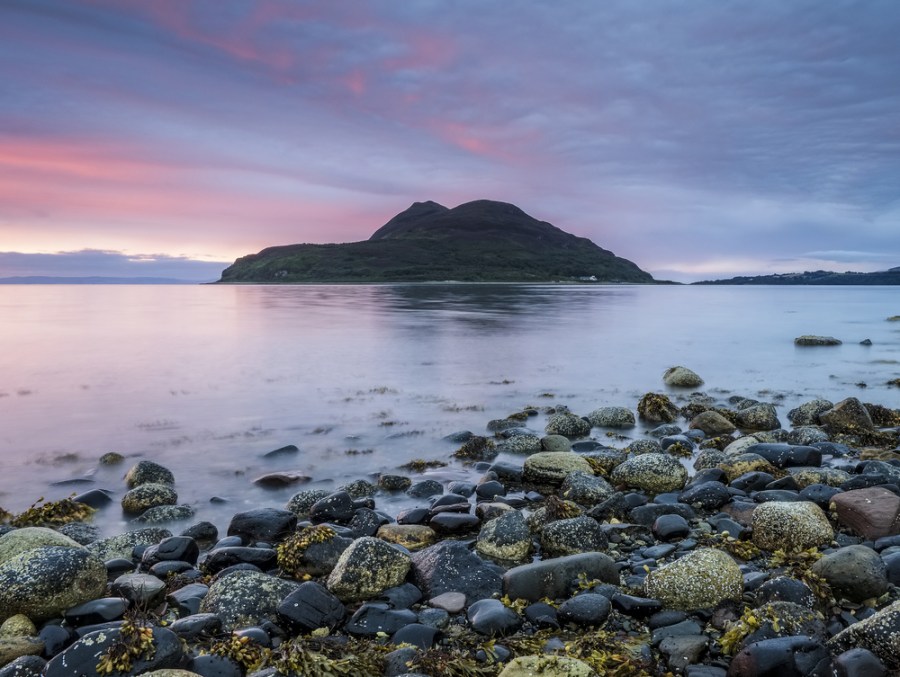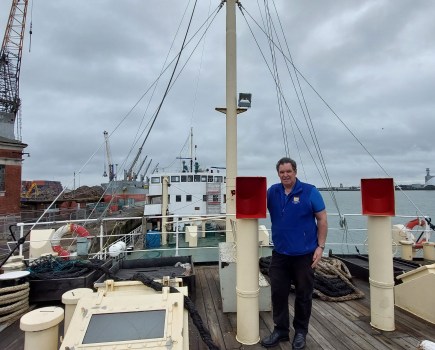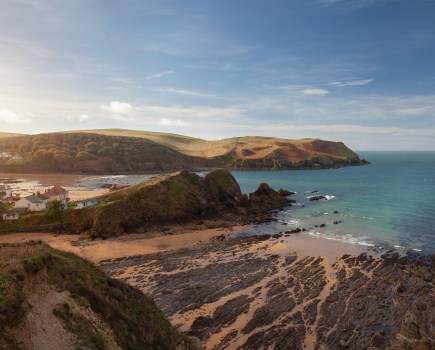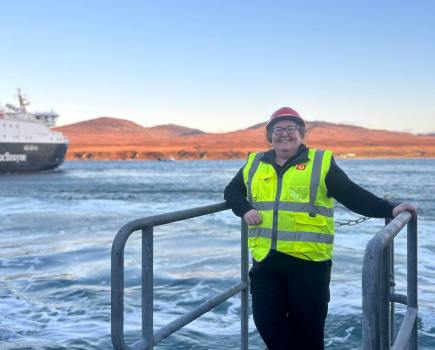Newsnight presenter KIRSTY WARK talks about her life-long link with the Isle of Arran, which provides the setting for her debut novel. Interview by Alex Reece
My connection with Arran goes back a long way. I remember before Mum and Dad had a car, we went to Arran on holiday and they just had bikes, with little seats for myself and my brother. Getting on the boat at Ardrossan, that was the major excitement, then, 40 minutes later, we’d be on a magical island.
I still go regularly now. My son and daughter also like nipping over. It’s something you can do in a day from where I live in Glasgow. There’s a wonderful wildness to the area. You can see red deer in the hills. And you’ve got a rich array of landscape in a small place, with Goat Fell and The Sleeping Warrior – Arran’s big hills – dominating the island.
We always go back to Lamlash, which overlooks Holy Isle, where part of my book is set. It’s an original, Edwardian holidaymaking place but it’s got some beautiful walks, and when you go out along the coast there, you often see seals lying on the rocks.
A perfect day on Arran would involve a walk along the beach, a visit to Brodick Castle, lunch at the Brodick Bar and a bit of rambling on Glen Rosa. I also like beachcombing, and there are great beaches for collecting bits of china on Arran. You can get it at Lamlash but also at Kildonan. I sometimes use the china to make a mosaic, but it also just sits in a jar. If a boat’s gone down years and years ago, you can still find pieces of dinner service coming up on the beach.
In a way, my book is like a love letter to Arran, because I really do think it’s such an amazing place, with a very rich history. The novel weaves generations of women together, and there is no other place where this particular story could be told.
Kirsty Wark’s novel, The Legacy of Elizabeth Pringle, is out in paperback now by Two Roads Books, £7.99 (also available as an ebook).
Read more ‘My Coast’ articles here or in the magazine.
"We always go back to Lamlash, which overlooks Holy Isle, where part of my book is set. It’s an original, Edwardian holidaymaking place but it’s got some beautiful walks, and when you go out along the coast there, you often see seals lying on the rocks."








